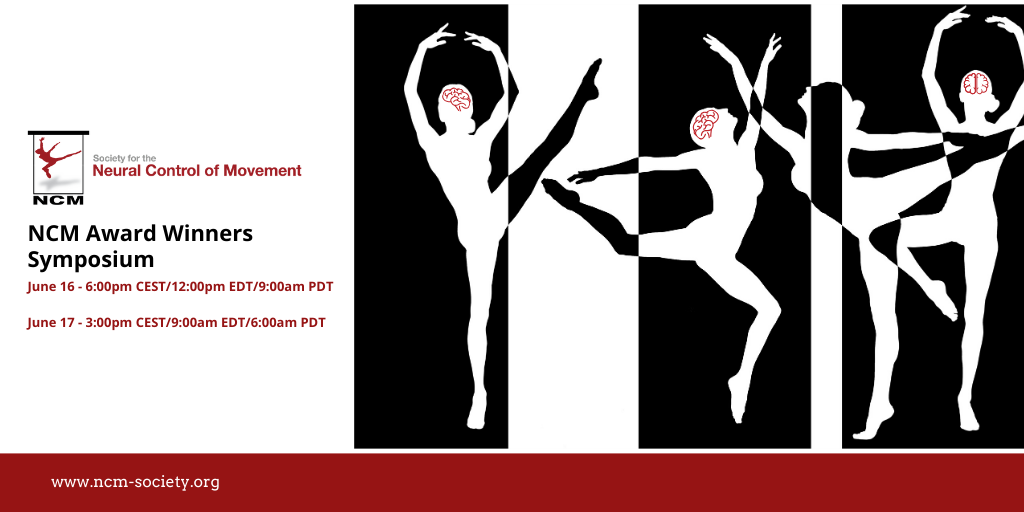NCM Award Winners Symposium
Join us online to hear from the NCM 2020 Scholarship winners! Following a competitive review process, the winners were chosen to present their work on the podium in Dubrovnik. Due to the unfortunate cancellation of NCM 2020, we were unable to hear from them in person.
Meet us online on June 16 & 17, 2020 to hear the award winners’ presentations, engage in virtual plenary question and answers, then have the opportunity to speak directly to the presenters in virtual breakout sessions moderated by key individuals in our community.
View the program below, register for free, and participate in the virtual Society for the Neural Control of Movement Award Winners Symposium.
Registration
Registration is now closed.
The NCM Award Winners Symposium is free and open to all researchers, scientists and students interested in the neural control of movement with the acceptance of the Online Code of Conduct.
Please review the Online Code of Conduct here.
June 16, 2020:
Note all times are in Central European Summer Time (UTC +2)
| 6:00pm – 6:20pm | Giacomo ArianiRepetition effects for movement sequencesRepeated practice is an essential component of long-term skill acquisition. However, movement repetition has also been shown to have short-term benefits on performance, increasing the speed and accuracy of a second execution. Such effects have been reported even for overlearned behaviors, such as point-to-point arm reaching. In two tightly related streams of research, we studied repetition effects in the context of sequential movements, thereby gaining novel insight about motor planning during sequence production. In the first series of behavioral experiments, we used a discrete sequence production (DSP) task in which human volunteers had to perform short sequences of finger movements. In Exp. 1 (N=49), participants were presented with randomly varying sequences and we manipulated whether they had to execute the sequence (Go), or not (No-Go), and whether the sequence was repeated on the next trial (Repetition), or not (Switch). We established that repeating a sequence of finger movements led to immediate improvements in speed without associated accuracy costs. The biggest benefit was observed in the middle part of a sequence, suggesting that the repetition effects likely resulted from facilitated online planning – the ability to plan upcoming elements while executing current ones. This claim was further supported by Exp. 2 (N=40), in which we kept a set of sequences fixed allowing participants to develop sequence-specific knowledge: once learning reduced the need for online planning, the benefit of repetition disappeared. Finally, we found that repetition-related improvements only occurred for the trials that had been preceded by sequence production, suggesting that recent movement experience may be required to reap the benefits of repetition: actual practice might be more beneficial to the human sensorimotor system than mental rehearsal for producing short-term performance improvements. In the second, currently ongoing stream of this research (N=7), we are investigating whether these findings generalize beyond discrete sequences of finger movements, to sequences of upper limb reaching movements. While finger movements are essentially non-inertial and can be produced discretely, control of the arm is highly inertial, and transitions between reaching movements can be made either discrete or continuous, where different movement elements are concatenated into a single, complex arm movement. Thus, the investigation of sequences of reaching movements provides an explicit test of whether the processes of online planning, and the benefit of repetition, qualitatively differ between sequences of discrete movements and the continuous production of a complex arm trajectory. Together, our results shed light on existing theories of sequence production across tasks and effectors, highlighting the importance of practice for enhancing our ability to link individual sequence elements into skilled sequential behavior.
Discussant: Dagmar Sternad, Northeastern University |
| 6:20pm – 6:40pm | Sarah Wilterson Acquisition and adaptation of de novo sensorimotor mappingsWhile much attention has been focused on understanding the processes underlying sensorimotor adaptation in highly practiced actions, relatively little attention has been paid to understanding how truly novel sensorimotor mappings are acquired. From the few recent studies that have focused on motor learning de novo, it appears that the learning processes in these tasks depart from those processes observed in adaptation tasks. The patterns associated with de novo learning closely reflect characteristics of reinforcement learning, as opposed to sensory-prediction-error learning processes. To better characterize how sensorimotor mappings are acquired de novo, we modified a task developed by Fermin and colleagues (2010). This task involved moving a virtual cursor across a grid to a goal position. Importantly, the mapping between the keys was arbitrary and unintuitive, defining a novel sensorimotor mapping. This task serves as a model system to study learning and adaptation of de novo sensorimotor mappings. The first goal of our study was to use behavioral manipulations and computational modeling to distinguish between model-free and model-based reinforcement learning processes. Two groups of participants trained to move a cursor between a paired start-end position. One group was provided with instructions – the shortest sequence of key. Following acquisition, both groups were tasked with moving the cursor between novel start-end position pairings. While the group trained with instructions was less able to generalize their learning to the novel start-end position pairings. This suggests that instruction blunted learning of the underlying sensorimotor mapping. In a follow-up experiment, we probed the acquisition time course of the sensorimotor mapping without any instruction. We found that with training, participants were able to generalize and perform progressively further future-state planning (i.e. the number of keypresses required to move from the start to the end position). We modeled these behavioral results using six increasingly complex reinforcement learning models: from simple state-action reinforcement to using the learned action-mapping for planning. We found that a combination of both model-free learning and model-based planning was necessary to account for learning and generalization of the new sensorimotor mapping. The second goal of our study was to show that the newly learned sensorimotor mapping can be adapted to a perturbed environment. To demonstrate this adaptation effect, we shifted the mapping of each finger to the finger immediately adjacent (e.g. the middle finger now does what was initially learned by the ring finger). Participants were able to adapt to this configuration more readily than they could a completely new, random mapping. These findings show that sensorimotor mappings learned de novo are adaptable shortly after acquisition and that adaptation processes are not limited to well-practiced, continuous movements.
|
| 6:40pm – 7:00pm | Konstantina KilteniRapid learning and unlearning of predicted sensory delays in self-generated touchSelf-generated touch feels less intense and less ticklish than identical externally generated touch. This somatosensory attenuation occurs because the brain predicts the tactile consequences of our self-generated movements. To produce attenuation, the tactile predictions need to be time-locked to the movement, but how the brain maintains this temporal tuning remains unknown. Using a bimanual self-touch paradigm, we demonstrate that people can rapidly unlearn to attenuate touch immediately after their movement and learn to attenuate delayed touch instead, after repeated exposure to a systematic delay between the movement and the resulting touch. The magnitudes of the unlearning and learning effects are correlated and dependent on the number of trials that participants have been exposed to. We further show that delayed touches feel less ticklish and non-delayed touches more ticklish after exposure to the systematic delay. These findings demonstrate that the attenuation of self-generated touch is adaptive. Kilteni et al. eLife 2019; DOI: https://doi.org/10.7554/eLife.42888
Discussant: Kathleen Cullen, Johns Hopkins University |
| 7:00pm – 7:20pm | Anupama SathyamurthyCerebellospinal neurons regulate motor learning and performanceSeamless execution of a broad repertoire of motor skills, from dexterous movement of the arm to walking, is accomplished by the concerted action of diverse motor areas, including the cortex, basal ganglia, red nucleus, brainstem, cerebellum, and spinal cord. While there have been great strides toward defining the neural computations of each of these areas and their contribution to motor control, to truly understand the neural basis of behavior, it is essential to reveal how these individual motor areas are bound into coordinated networks to accomplish purposeful movement. Here we used a circuit-based approach to define and investigate the anatomical organization and function of a small population of deep cerebellar neurons that give rise to the “CerebelloSpinal Tract” (CeST), a direct pathway that links two important motor control areas, the cerebellum and the spinal cord. First, we performed an anatomical characterization of the CeST cells of origin, identifying their distribution, organization, and neurotransmitter status. Next, we used an intersectional genetic strategy to specifically silence CeST neurons, and identified distinct roles for the contralateral and ipsilateral CeST neurons in motor control. While silencing CeST neurons did not affect basic features of locomotion, we found that silencing the contralaterally-projecting CeST neurons affected rotarod learning and that silencing the ipsi-laterally projecting CeST neurons affected skilled reaching. Finally, to understand the circuit mechanisms underlying the role of CeST neurons in skilled locomotor learning, we sought to define the specific spinal cord populations that receive inputs from this pathway. We found that the CeST neurons target the medial ventral horn of the spinal cord – the neuronal hub for interlimb coordination in the spinal cord. Within this domain, CeST neurons synapse onto long descending propriospinal neurons that link together the cervical and lumbar regions of the spinal cord, together providing a likely anatomical substrate for cerebellar control of movement. Together, we (a) show that a small sub-population of neurons in the deep cerebellar nuclei, defined by their projection to the spinal cord, is critical for normal motor control and learning, and (b) provide a link between motor control networks in the cerebellum and specific circuits for movement execution in the spinal cord, thereby establishing cerebellospinal neurons as important players in the descending control of movement.
|
| 7:20pm – 7:40pm | Scott AlbertHolding the arm and fingers still through integration of cortical commandsEvery movement begins and ends in stillness. While decades of research have delineated the cortical mechanisms that control reaching, we know comparatively little about how the brain controls stillness.Current models assume that the same cortical regions generate commands for reaching and holding. The cortex first maps the target location into reach commands. Then the cortex maps the target location into hold commands. In this way, moving and holding occur independently, but both rely on the target location. Here we measured point-to-point movements in humans and monkeys. In contrast to earlier models, we found that hold commands do not solely depend on the target location. Rather, trial-by-trial differences in hold commands are coupled to variations in the preceding move commands. This coupling takes the form of integration; irrespective of the reach kinematics, hold commands are predicted by the time-integral of reach commands. This rule is unaffected by cortical damage in stroke survivors, despite impaired movement quality. These findings suggest that moving and holding may be controlled by separate brain regions. To move the arm, the cortex maps the target location into reach commands. To hold the arm, a subcortical system integrates the reach commands, yielding persistent commands for holding still.
Discussant: Joseph Galea, University of Birmingham |
| 7:40pm – 8:00pm | Marta RussoDynamic interactions as support for postural balanceNumerous studies have shown that postural balance is improved through light touch of a stable surface. Less attention has been paid to the support by an unstable system like a cane, which is often used by frail individuals to reduce the risk of falling. Further, little is known about how another individual provides support via touch, as in physical therapy or dancing. We developed a set of experimental paradigms to examine the effect of mechanical and human support on balance. A first study focused on the role of canes in assisting balance when standing on uneven terrain. Participants (n=16) were instructed to stand on a narrow beam placed on a force platform, supporting themselves by two instrumented canes, one in each hand. Applying different forces on the canes, light touch proved superior in decreasing the sway; increasing the exerted force yielded no further benefit, in fact had a destabilizing effect. The displacement of the hand on the cane handle was proportional to the variability of the sway and the force applied, consistent with the well-known mechanical effect that pushing destabilizes an inverted pendulum. A second study compared postural sway in professional ballet dancers and participants without balance training (n=28). They were asked to balance on the same narrow beam while holding the handle of a robotic arm that provided 3 levels of increasing stability simulating canes of different lengths; for control, the robotic arm could also be stable or fully compliant. Interaction force was measured by the robot together with postural sway, whole-body kinematics and EMG activity. As expected, increased stability of the support decreased the sway; less expected was that ballet dancers displayed larger sway than non-trained participants, indicating that sway may not be an ideal metric for balance ability. Remarkably, even when participants only held canes above ground or when the robotic arm was compliant, postural sway was reduced. In a third experiment, a second person, also standing on a narrow beam, held the same robot handle to provide support to the subject. Novice participants significantly improved their balance when supported by another novice, whereas the sway of professional dancers was minimally affected by the partner. Ongoing analyses examine the nature of this active information transmission in its relation to postural sway. In summary, different from novices, professional ballet dancers did not take advantage of the support provided either by a mechanical device or another individual. However, we cannot claim that they are less stable than non-trained individuals. This unexpected result suggests that the center of pressure, gold-standard measure of postural stability, only reflects effective balance and may not be sufficient to describe the mechanisms engaged in postural control. Further analysis on the direction of the ground-on-foot force may better characterize the observed behavior.
|
| 8:00pm – 9:00pm | Individual speaker breakout discussions
Click here to learn moreInterested in talking to the speaker in more depth? Meet them in a virtual breakout room to continue discussions. Moderated by a senior member of the NCM community, we look forward to lively discussion.
|
June 17, 2020:
Note all times are in Central European Summer Time (UTC +2)
| 3:00pm – 3:20pm | David XingPrimary motor cortex differentially modulates movement during locomotion and voluntary actionsOur ability to directly modulate our gait while walking with precise, voluntary adjustments is what allows us to navigate challenging and complex terrains. However, how our nervous system generates the command signals to control movement during unattended locomotion, precise voluntary movement, and the transition in between, is poorly understood. Previous studies have shown that rodents and felines are able to perform basic walking even after motor cortex is shut down, but their ability to reach with their limbs or avoid obstacles is abolished. In non-human primates, lesions of the corticospinal tract led to greater impairment, and slower recovery, of stationary volitional movements compared to unattended locomotion. These prior findings suggest that motor cortex may be differentially engaged in these two types of behaviors. We wanted to investigate whether the relationship between activity patterns in primary motor cortex (M1) and the generated movement is similar across both voluntary movements and locomotion. To directly compare the cortical activity during the two movement modalities, we recorded from M1 in rhesus macaques while they performed locomotion on a treadmill as well as stepping over an incoming obstacle from a stationary, standing position, and stepping over the obstacle while walking on the treadmill. We found large reorganization of the same recorded neural population both in terms of the correlation structure, as well as gait phase tuning and depth of modulation during voluntary control compared to treadmill walking. Additionally, neurons whose spiking activity was well correlated with movement kinematics during obstacle avoidance did not necessarily maintain this correlation during walking. Using a Wiener filter decoder, we were able to accurately decode the kinematics from the neural activity for both types of movements separately, but performance was poor when attempting to generalize the stationary obstacle avoidance decoder to walking or vice-versa. Furthermore, we were able to clearly separate the population activity between the two behaviors using LDA. During obstacle avoidance while walking, the neural activity smoothly transitioned from the region occupied during walking to the region occupied during stationary obstacle avoidance in the LDA dimension. Despite this, using dPCA, we were able to find a low-dimensional neural manifold that was preserved between the two behaviors. The top three components of this preserved manifold accounted for >50% of the total variance in the full-population, and was well separated from the components that discriminated between behaviors. Additionally, the neural activity within this manifold exhibited rotational structure. These findings demonstrate that different patterns of M1 activity are engaged during voluntary movements compared to autonomous locomotion, in agreement with previous M1 inactivation studies, although certain population-level features, such as rotations, are preserved.
Discussant: Gelsy Torres-Oviedo, University of Pittsburgh |
| 3:20pm – 3:40pm | Michelle HeusserSubspaces as signatures of sensorimotor transformation in the primate superior colliculusTo correctly orient our eyes toward an object of interest, we must process information contained in our visual field and convert it into an appropriate motor command. The superior colliculus (SC) in the subcortex is essential for performing this sensorimotor transformation. Neurons in its intermediate layers, in particular, emit a burst of spikes when a stimulus is presented in their response fields, and they produce yet another burst that results in a saccadic eye movement to that stimulus. In the intervening period, SC neurons display low-frequency activity. These neural signatures have been well-characterized in an experimental setting through a delayed saccade task, which temporally dissociates the visual target presentation and the eventual eye movement. In this talk, I will detail our investigation of rhesus macaque (Macaca mulatta) SC population activity during the delay period using a low-dimensional state-space methodology. I will first show that activity of neurons recorded simultaneously with a laminar probe resides in highly separable and nearly-orthogonal subspaces during the visual and motor epochs, lending evidence that SC neurons differentially encode visual- and motor-related signals at the population level. I will then describe our characterization of activity during the delay period of this task and demonstrate that this activity resides in yet another separable subspace. I will further show that the position within this subspace is correlated with single trial metrics (e.g., reaction time), elucidating a possible mechanism for movement generation in the oculomotor system.
Discussant: Juan Alvaro Gallego, Imperial College London |
| 3:40pm – 4:00pm | Daniela BuchwaldMonkey see, monkey touch, monkey do - Grasp planning based on different sensory modalities in the non-human primateOur hands are important tools that allow us to interact with our surroundings, ranging from the usage of our sense of touch for shape and texture recognition to object grasping. Many different brain areas are involved in the sensory-motor transformation that is required to link sensory information to meaningful movements. However, whether grasp planning activity depends on how object information is acquired and how the cortical areas involved in this process interact has not been studied well. In order to pursue this question, we recorded neural activity from a rhesus macaque (Macaca mulatta) during a delayed-grasping task, in which the animal was instructed to lift various objects that he perceived beforehand either visually or tactually. This allowed us to gain insight in how these two sensory modalities influence grasp planning. While the animal performed this task, we recorded spiking activity from four cortical areas (anterior intraparietal area AIP, premotor area F5, primary motor area M1, and the primary somatosensory area S1) involved in hand grasping. When comparing the activity of these brain areas between visual and tactile trials, we found differences in how the brain plans the required grasps, even though the actual movement was identical. To this end, we paid special attention to the preparatory period of this task, after an object was seen or touched, but before the grasp action was started. First, we checked how many units were significantly tuned to visual and tactile trials, finding differences between both trial types. In order to better quantify the difference between visual and tactile grasp planning activity, we trained a decoder to differentiate between the various objects and task types. During early memory, the decoder could distinguish well between visual and tactile trials, even well after the cue signals have vanished. During late memory, i.e., shortly before the movement start, the decoding performance decreased, but significant distinction between visual and tactile trials was still possible in all brain areas investigated. Only once the actual movement started, decoding accuracy decreased further, since from then on the executed movement and sensory information (darkness and touching the object to lift it) was identical. Together, we demonstrated that grasping movements based on visual and tactile object information were planned differently in these brain areas, even when the resulting movements are the same, indicating that the type of sensory modality used for a particular action planning is relevant for understanding the underlying neuronal processes. Supported by: Deutsche Forschungsgemeinschaft (SFB 889, Project C09).
Discussant: Andrea d’Avella, Universita degli Studi di Messina |
| 4:00pm – 4:20pm | Jung Uk KangInterhemispheric communication supports bimanual coordination: Effects of posterior corpus callosum blockadeBimanual coordination is essential to activities such as tying shoelaces or playing a musical instrument. It likely requires communication between brain areas on each side of the brain. Yet, the role of interhemispheric communication in bimanual coordination is poorly understood. The Parietal Reach Region (PRR) encodes early planning of contralateral arm movements. The corpus callosum is the most direct path between the cerebral hemispheres. To test whether the callosum helps support bimanual coordination, we compared neural activity and behavioral performance before and during reversible blockade of the callosal pathways connecting left and right PRR. We first identified white-matter pathways between left and right PRR using in vivo manganese-enhanced magnetic resonance. We found that axons connecting left and right PRR across the callosum were restricted to the splenium. We then reversibly blocked this pathway using focal lidocaine injections into the callosum while an animal planned and then executed unimanual movements to a single target or bimanual movements to either a single target or two different targets. We measured interhemispheric LFP-LFP coherence to get an estimate of interhemispheric communication between left and right PRR, before and during the blockade. Before blockade, we observed three different levels of interhemispheric LFP-LFP coherence during the planning period in the 20-36 Hz frequency range. Coherence was high when an animal planned bimanual movements to a single target; intermediate when an animal planned unimanual movements to a single target; and low when an animal planned bimanual movements to two different targets. There were no effects at other bands. This task- and frequency-dependent modulation of interhemispheric LFP-LFP coherence is consistent with the hypothesis that bimanual coordination involves communication between right and left PRR. During blockade, the difference in LFP-LFP coherence amongst different movement types was abolished. This indicates that the communication takes place via the callosum. Additional findings regarding interhemispheric spike-LFP coherence also support this conclusion. Behaviorally, we observed that movements of the two arms were less synchronous during callosal blockade, consistent with our hypothesis that information carried by callosal PRR pathways supports bimanual coordination. We also observed faster reaction times in both unimanual and bimanual movements during blockade. This suggests that callosal connections facilitate bimanual coordination via a competitive process such that the faster arm slows down to match the slower arm. In conclusion, interhemispheric communication between left and right PRR via the posterior corpus callosum supports sharing of information about the movement plan of each arm in service of bimanual coordination.
Discussant: Pieter Medendorp, Donders Institute for Brain, Cognition and Behaviour |
| 4:20pm – 4:40pm | Sara HussainPhase dependent enhancement of skill consolidation in human cortexThe ability to learn new motor skills and store them in memory is a fundamental feature of human behavior. It has been proposed that the neural mechanisms supporting memory may be rhythmic, such that they vary with oscillatory phase in task-relevant brain regions. However, direct and causal evidence for rhythmic memory processing is lacking. Here, we tested this possibility in the context of motor skill consolidation by delivering closed-loop transcranial magnetic stimulation (TMS) to the primary motor cortex (M1), a crucial node within the motor learning network, immediately after healthy adults learned a new motor skill. On Day 1, all participants practiced an explicit motor sequence learning task in which they repeatedly typed a numerical sequence (4-1-3-2-4) as quickly and as accurately as possible using their non-dominant left hand. After practice, when consolidation is known to occur, active closed-loop TMS was delivered to the contralateral M1 during either mu peak (active-peak group, N=17) or trough (active-trough group, N=17) phases. In a third group, sham closed-loop TMS was delivered to contralateral M1 during random mu phases (sham-random group, N=16). All participants were tested on the skill the next day to evaluate consolidation. We first confirmed that the real-time EEG analysis algorithm used to deliver closed-loop TMS accurately targeted mu peak, trough, and random phases. Indeed, oscillatory phases clustered near 90° in the peak-active group (p<0.001) and near 270° in the trough-active group (p<0.001), while phases were uniformly distributed in the random-sham group (p=0.652). Next, we evaluated differences in skill acquisition and consolidation across groups, measured as changes in the number of correct sequences typed per trial. Although skill acquisition was comparable (p>0.56 for all), overnight skill consolidation differed significantly between groups. Specifically, consolidation was enhanced in the trough-active group relative to the peak-active (p=0.003) and random-sham groups (p=0.001), while it was similar in the peak-active and random-sham groups (p=1.0). The consolidation enhancement was driven by improvements in speed (trough-active vs. peak-active, p=0.003; trough-active vs. random-sham, p=0.001; peak-active vs. random-sham, p=1.0) rather than accuracy (p>0.272 for all). Our results document oscillatory phase-dependent enhancement of human skill memory using closed-loop TMS, establishing the causal contribution of M1 activity during sensorimotor oscillatory trough but not peak phases to skill learning. We conclude that the neural mechanisms supporting skill consolidation fluctuate rhythmically and coherently with the sensorimotor mu rhythm, such that consolidation occurs preferentially during brief windows of opportunity corresponding to optimal oscillatory phases.
Discussant: Scott Grafton, University of California, Santa Barbara |
| 4:40pm – 5:00pm | Supriyo ChoudhuryA novel wearable device for motor recovery of hand function in chronic stroke survivorsBackground: In monkey, reticulospinal connections to hand and forearm muscles are spontaneously strengthened following corticospinal lesion, likely contributing to recovery of function. In healthy humans, pairing auditory clicks with electrical stimulation of a muscle induces plastic changes in motor pathways (probably including the reticulospinal tract), with features reminiscent of spike-timing dependent plasticity. In this study, we tested whether pairing clicks with muscle stimulation could improve hand function in chronic stroke survivors. Methods: Clicks were delivered via a miniature earpiece; electrical stimuli at motor threshold targeted forearm extensor muscles. A wearable electronic device (WD) allowed patients to receive stimulation at home while performing normal daily activities. Ninety-five patients >6 months post-stroke were randomised to three groups: WD with shock paired 12 ms before click; WD with clicks and shocks delivered independently; standard care. Those allocated to the device used it for at least 4 hours per day, every day for 4 weeks. Upper limb function was assessed at baseline, and weeks 2, 4 and 8, using the Action Research Arm Test (ARAT) which has four sub-domains (Grasp, Grip, Pinch and Gross). Results: Severity across the three groups was comparable at baseline. Only the Paired Stimulation Group showed significant improvement in total ARAT (median baseline: 7.5; week 8: 11.5; p=0.019) and the Grasp sub-score (median baseline: 1, week 8: 4; p=0.004). The total number of paired stimulations received over the four weeks of device usage was significantly correlated with the change in ARAT score at visit 3 (Spearman’s ñ=0.53, p=0.013) but not at visit 4 (ñ=0.285, p=0.223). Conclusion: A wearable device delivering paired clicks and shocks over four weeks can produce a small but significant improvement in upper limb function in stroke survivors. Trial registration – CTRI/2018/03/012628.
Discussant: Claire Honeycutt, Arizona State University |
| 5:00pm – 6:00pm | Individual speaker breakout discussions
Click here to learn moreInterested in talking to the speaker in more depth? Meet them in a virtual breakout room to continue discussions. Moderated by a senior member of the NCM community, we look forward to lively discussion.
|
Speakers
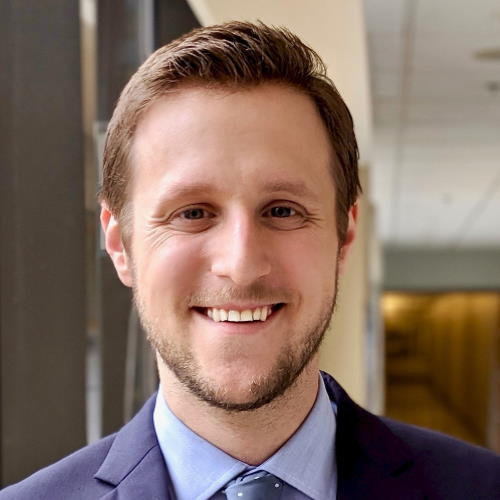
Scott Albert
Johns Hopkins University
Scott Albert is a graduate student in Biomedical Engineering at Johns Hopkins University, studying under the mentorship of Reza Shadmehr. He is interested in the neural control of reaching movements and arm postures, and how each of these processes is changed by the experience of error.
Mentor: Reza Shadmehr
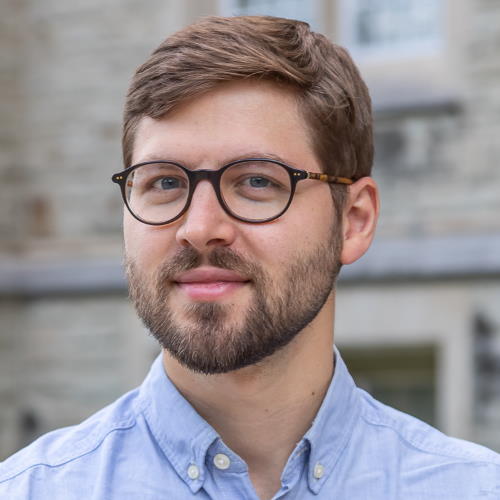
Giacomo Ariani
University of Western Ontario
Giacomo is a postdoctoral researcher in Jörn Diedrichsen’s Lab at Western University (Canada). Before that, he earned his PhD in Cognitive and Brain Sciences at the University of Trento (Italy). His current research focuses on the interactions between motor planning and skill learning in the context of complex sequential behavior.
Mentor: Jorn Diedrichsen
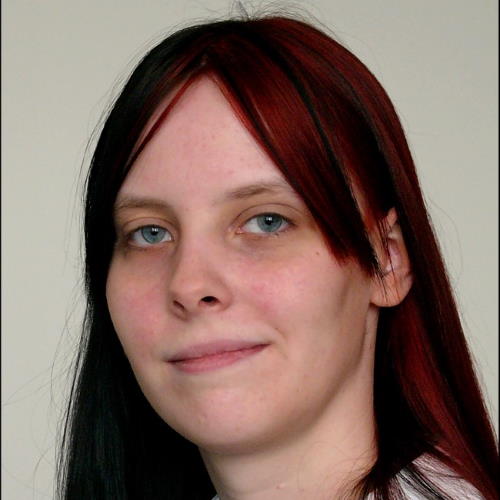
Daniela Buchwald
German Primate Center
Daniela Buchwald is a PhD candidate in Hans Scherberger’s group at the German Primate Center in Göttingen, where she studies grasping movements in rhesus macaques. In her thesis research she investigates how different sensory modalities influence the planning of grasping movements in the monkey brain.
Mentor: Hans Scherberger

Supriyo Choudhury
Institute of Neurosciences Kolkata
I am currently working as a senior research fellow at Institute of Neurosciences Kolkata, India. I did my medical graduation followed by post-graduation in Clinical Pharmacology. Since last five years I am engaged in clinical research activities on patients with stroke and movement disorders.
Mentor: Stuart Baker
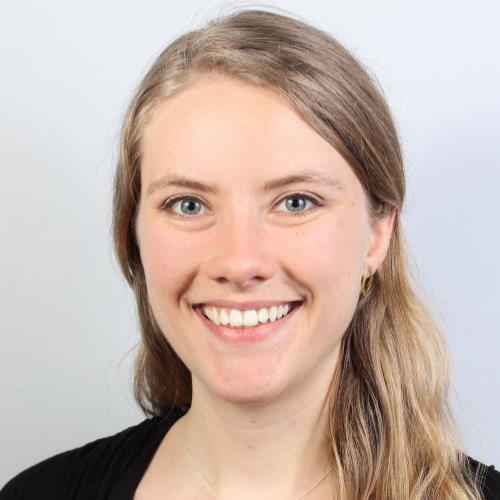
Michelle Heusser
University of Pittsburgh
Michelle R Heusser is a PhD Candidate in Neeraj Gandhi’s lab at the University of Pittsburgh. Her current research focuses on investigating the population-level representation of visual and motor signals by neurons in the superior colliculus throughout the sensorimotor transformation process.
Mentor: Raj Gandhi
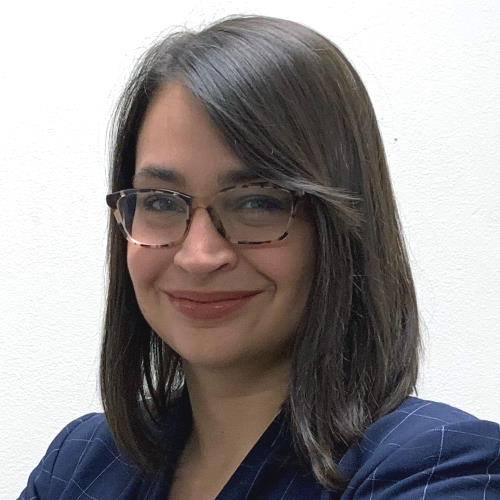
Sara Hussain
National Institute of Neurological Disorders and Stroke at the National Institutes of Health
Sara obtained her PhD in Human Physiology at the University of Iowa under the combined mentorship of Susanne Morton, Warren Darling, and Kelly Cole. She is currently completing her postdoctoral training at the National Institute of Neurological Disorders and Stroke at the National Institutes of Health in Leonardo Cohen’s lab. She studies the brain oscillatory mechanisms underlying human motor control using closed-loop noninvasive brain stimulation.
Mentor: Leonardo Cohen
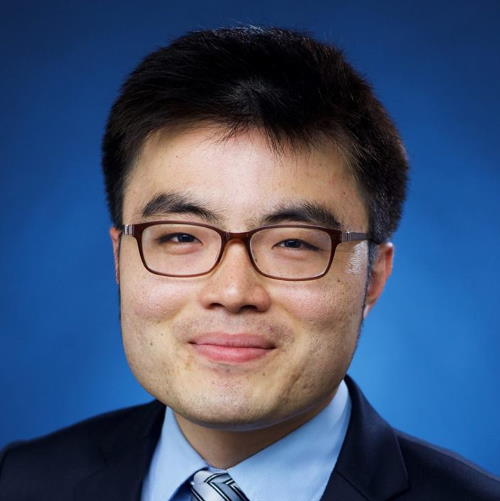
Jung Uk Kang
Washington University School of Medicine
Jung Uk Kang is a neuroscience PhD candidate in the lab of Dr. Lawrence Snyder at Washington University School of Medicine. He received his B.S. in Mathematics-Computer Science from Brown University. His thesis research focuses on how interhemispheric communication between posterior parietal cortices supports bimanual and eye-hand coordination.
Mentor: Lawrence Snyder
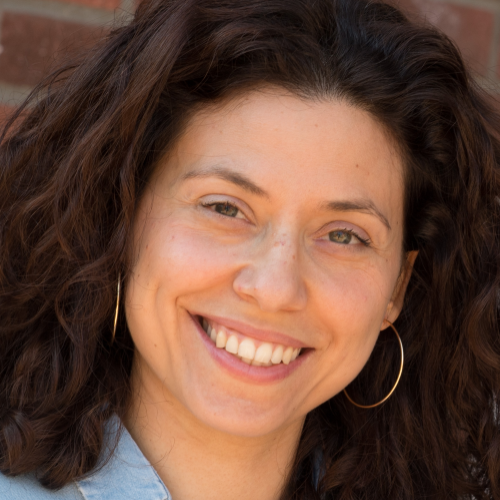
Konstantina Kilteni
Karolinska Institutet
Konstantina Kilteni studied Electrical and Computer Engineering at the National Technical University of Athens and she did her PhD studies in Experimental Psychology at the University of Barcelona. She was a Marie Skłodowska-Curie postdoctoral fellow and she is currently an Assistant Professor at the Department of Neuroscience in Karolinska Institutet. Her research addresses how the brain distinguishes between self-generated and externally-generated touch.
Mentor: Henrik Ehrsson

Marta Russo
Northeastern University
Marta studies neuromuscular mechanisms at multiple scales, from postural control and human-human interaction in professional dancers to reaching and catching in clinical populations. Her approach includes virtual environments and computational modeling. After earning her PhD with Andrea d’Avella and Francesco Lacquaniti, she is currently a postdoc with Dagmar Sternad.
Mentor: Dagmar Sternad
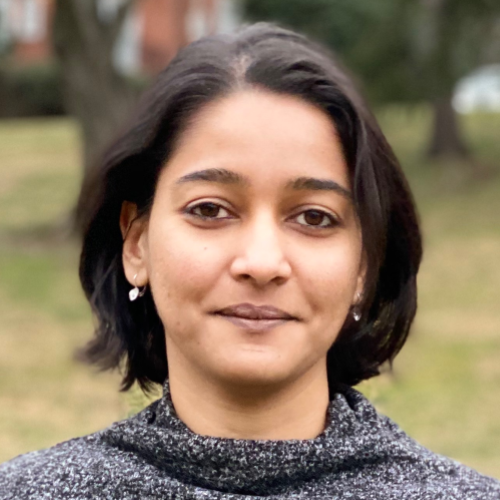
Anupama Sathyamurthy
National Institutes of Health
Anupama Sathyamurthy is a postdoctoral fellow in Ariel Levine’s lab at the National Institutes of Health, USA. Her work focusses on delineating the cell types of the spinal cord and understanding how spinal cell types are integrated into CNS-wide circuits for motor control.
Mentor: Ariel Levine
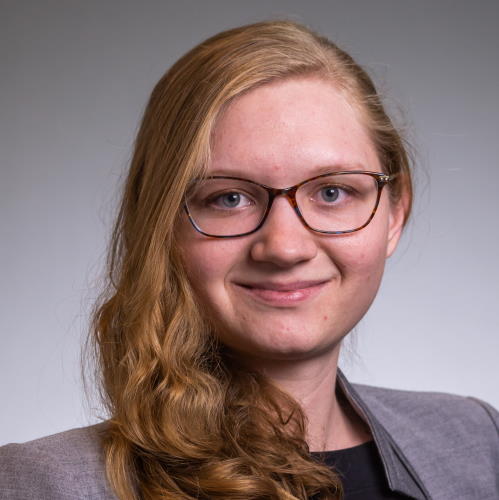
Sarah Wilterson
Princeton University
Sarah is a PhD candidate with Professor Jordan Taylor at Princeton University. Her primary research interest is the learning process in adults. In particular, she examines strategic planning and the early formation of skilled movement. Sarah expects to defend in 2021 and is currently exploring postdoctoral opportunities.
Mentor: Jordan Taylor
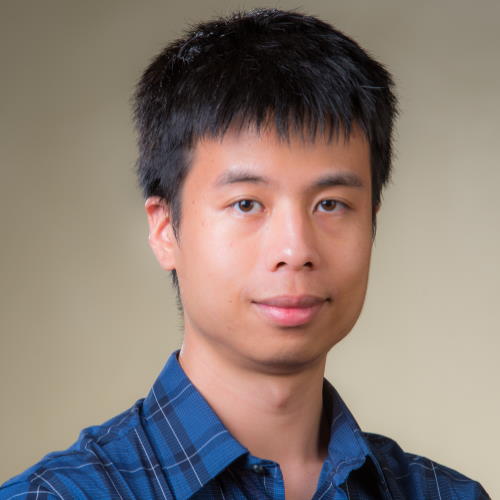
David Xing
Brown University
David obtained his BS in Biomedical Engineering from Columbia University in 2014 and is currently a PhD candidate at Brown University. He is part of the Neuromotion laboratory headed by Dr. David Borton, and his research focuses on understanding the central nervous system control of locomotion as well as developing hind limb brain-machine interfaces.
Mentor: David Borton

